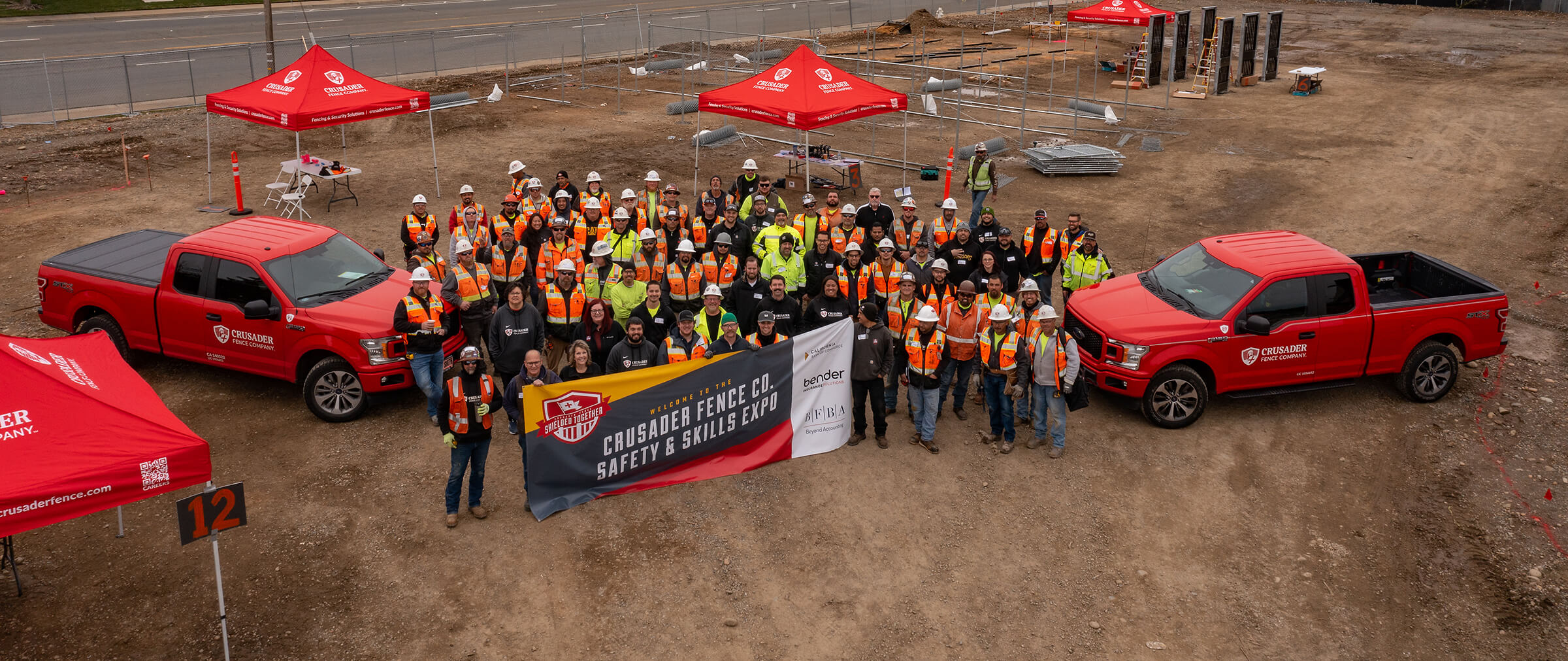Does building the right team keep you up at night? You’re not alone. Hiring and retaining quality employees is among the most important and challenging aspects of managing a growing company. As your business scales, the need for skilled, reliable team members becomes more urgent, yet the competition for good talent is fierce.
Finding people who not only have the right skills but also fit well with your company’s culture and long-term vision can feel like searching for a needle in a haystack. Retaining those employees is just as crucial, because a high turnover rate can disrupt momentum, drain resources, and stall progress.
A company that people truly want to work for is one that fosters a culture of trust, respect, and opportunity. It is critical to create an environment where employees feel valued, supported, and part of something bigger. When your company culture is a great fit, employees are more likely to stay long-term, become advocates for your business, and help attract others who share those same ideals.
Why Top Talent Might Not Be Seeking Out Your Company
A frequently overlooked key to attracting and retaining quality employees lies in visibility — both inside and outside your company. If potential hires don’t know who you are or what you stand for, they won’t apply. Similarly, if current employees aren’t clear on your company’s vision or their role in it, engagement and retention suffer.
The Hidden Link Between Visibility and Attracting Employees Who Fit
A highly effective tool for gaining visibility is video. Video shows your company’s culture in an engaging, relatable way. It gives potential hires an authentic look at your workplace, helping you stand out and attract the right fit. Unlike a job description or static images, video provides a deeper connection, so job seekers can see if they’d be a good fit long before they apply. Video can also showcase company values and identity, making your existing team feel connected, inspired, and aligned with your business.


Turning Everyday Events Into Connections for Long-Term Impact
For many business owners, the idea of creating a video can feel daunting or out of reach. You may be unsure where to start, what content to capture, and what to expect for return on investment. The good news is that compelling video content can come from just about anywhere within your business, such as your employees, your leadership team, loyal customers, vendors, and often the general public.
Simple, straightforward videos — whether employee testimonials or a project highlight — offer a powerful way to connect. With the right approach, creating video content can become a manageable, long-term tool for building your employer brand.
It comes down to having a proven plan to draw out the right content in the right way to craft a story. Any video project can return on investment if you follow these important guidelines.
1. Craft a Compelling Storyline
Start by identifying the main objective for your video — whether it’s recruitment, brand awareness, or fostering company culture. Where and how will you use this video? Consider resources that you already have to support your message: recent projects, outstanding employees, or customers willing to provide testimonial statements. Think about what’s realistic to capture on video and how you can use those elements to shape a story that aligns with your goals and resonates with your audience.

2. Compose Interview Questions with Purpose
Each person you interview brings a unique perspective to the story, so it’s important to tailor your questions to highlight their specific role and contributions. Think about what they can add to the overall narrative and ask questions that draw out those details. Craft questions that not only highlight individual experiences but also reinforce key themes throughout the video. Be sure to ask the same questions of multiple interviewees to overacquire content. This will allow for greater flexibility when producing and editing your video.

3. Opt for Quality Videography
When it comes to videography, don’t cut corners. While there are areas where you can save on a video project, sound and video quality shouldn’t be one of them. Investing in a professional with high quality equipment ensures raw footage is clear, sharp, and polished, which makes a huge difference in the final product. A pro also handles the technical details, so you can focus on the content without worrying about mic levels or camera angles. They’ll ensure everything runs smoothly, leaving you with a high-quality video that stands out.
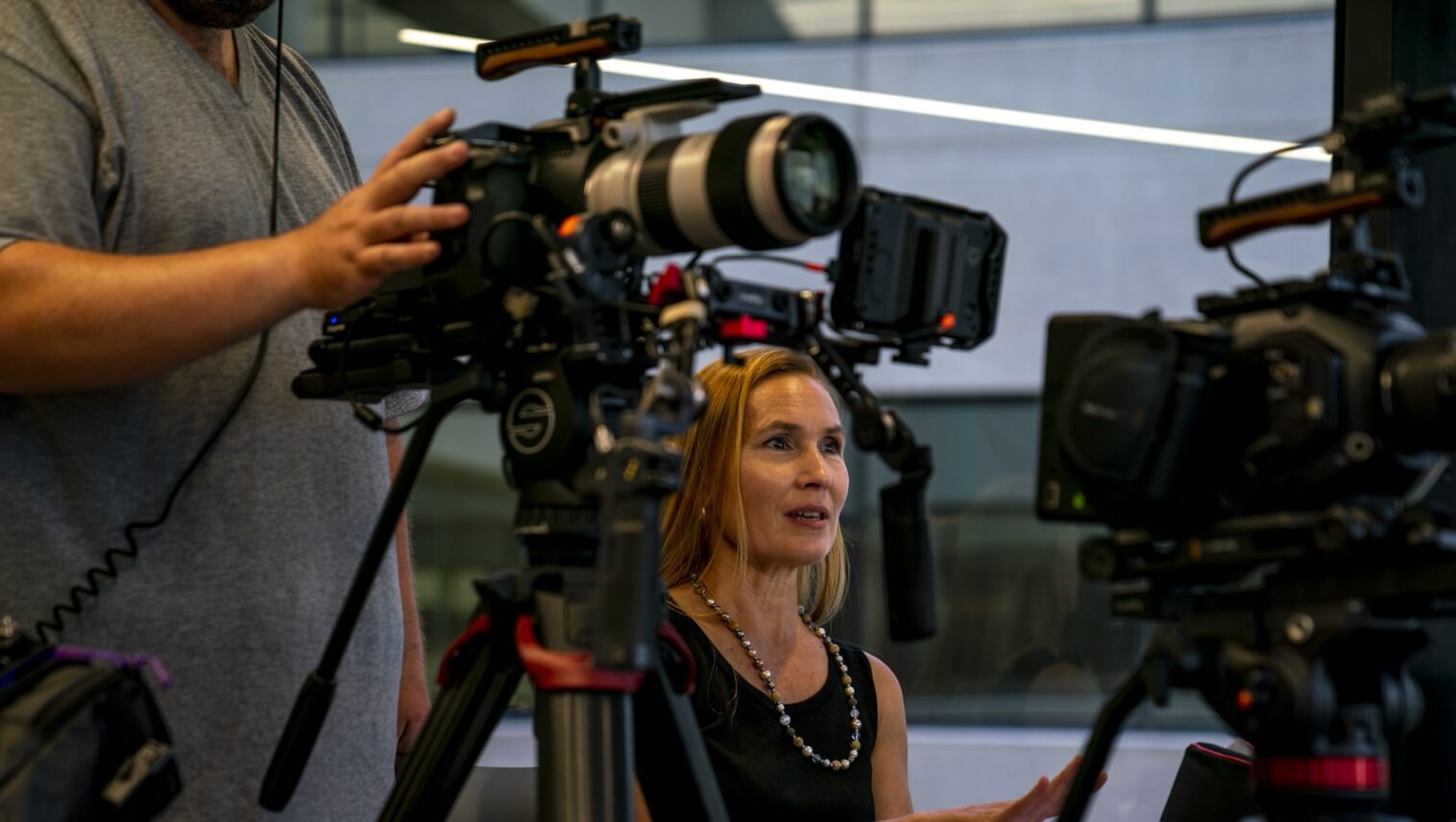
4. Structure Interviews for Success
Chances are, your interview subjects will not be experienced, professional speakers. Establish reasonable expectations and capture footage that allow for maximum editing flexibility. Set up interview sessions to get the best results and coach your participants in advance. Use techniques that help them feel more comfortable and natural, such as having them look at the interviewer rather than directly at the lens. Ask them to incorporate part of the question into their answers and to pause once they’ve finished speaking. It may take a few attempts to get this rhythm right, so be patient and use the first few minutes to help them get comfortable before diving into the main interview.
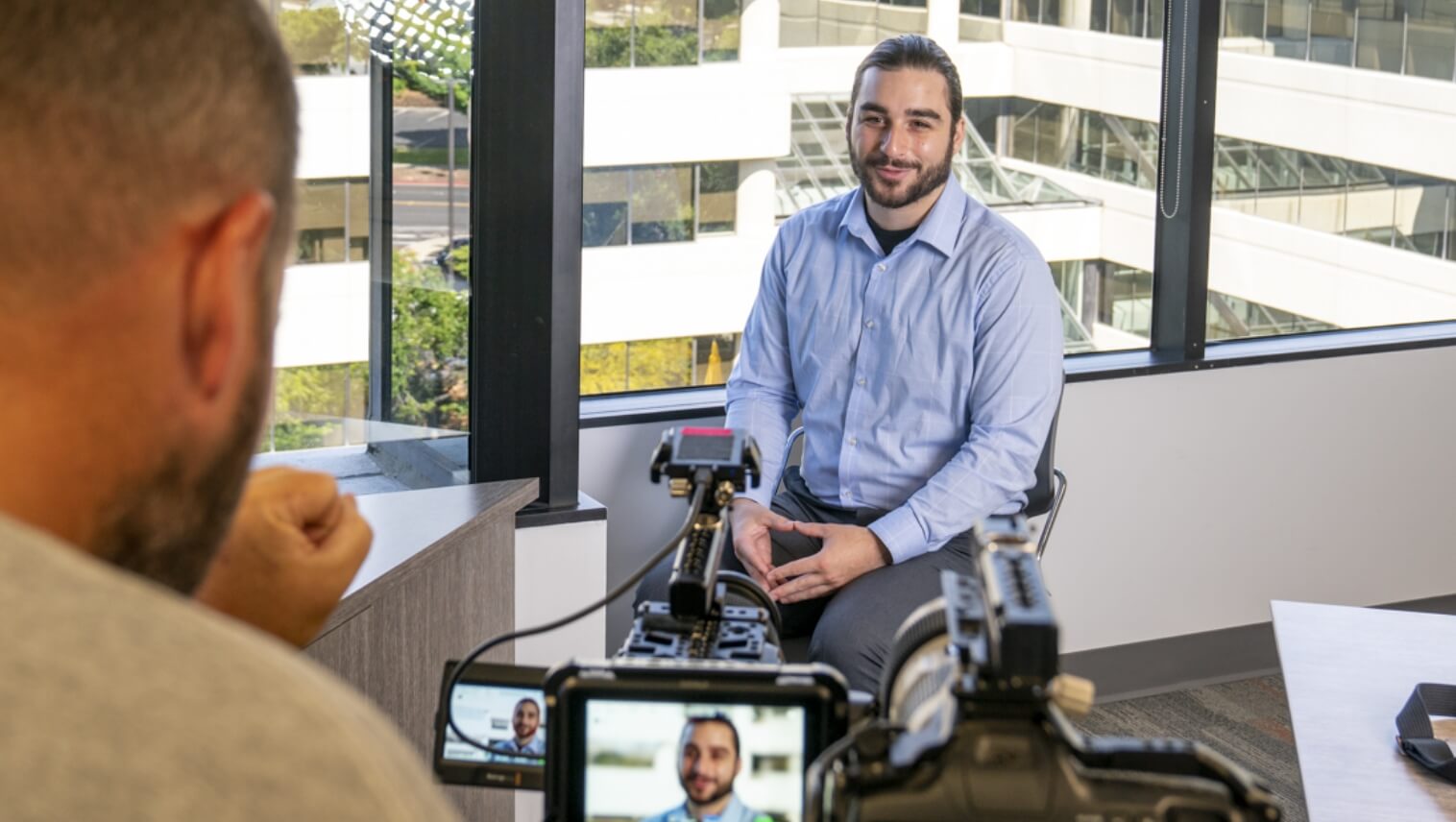
5. Catalog Content for Efficient Reference
After your shoot, you’ll have a lot of raw footage to sift through. Creating a system that categorizes video file content by theme, participant, or topic will save time in post-production. Proper organization ensures your video production process stays smooth and efficient, so you can quickly find the right clips to tell your story without wasting time searching through hours of footage.
Use AI to generate a transcript of all interview segments, then create a spreadsheet to inventory each clip. Include columns that mark the start and end times, identify who’s in the clip, and highlight key parts of the transcription. You can tag important themes or moments you want to revisit later. Consider creating a simple rating system to identify the strongest clips, so you can easily reference them during editing and save time down the road.
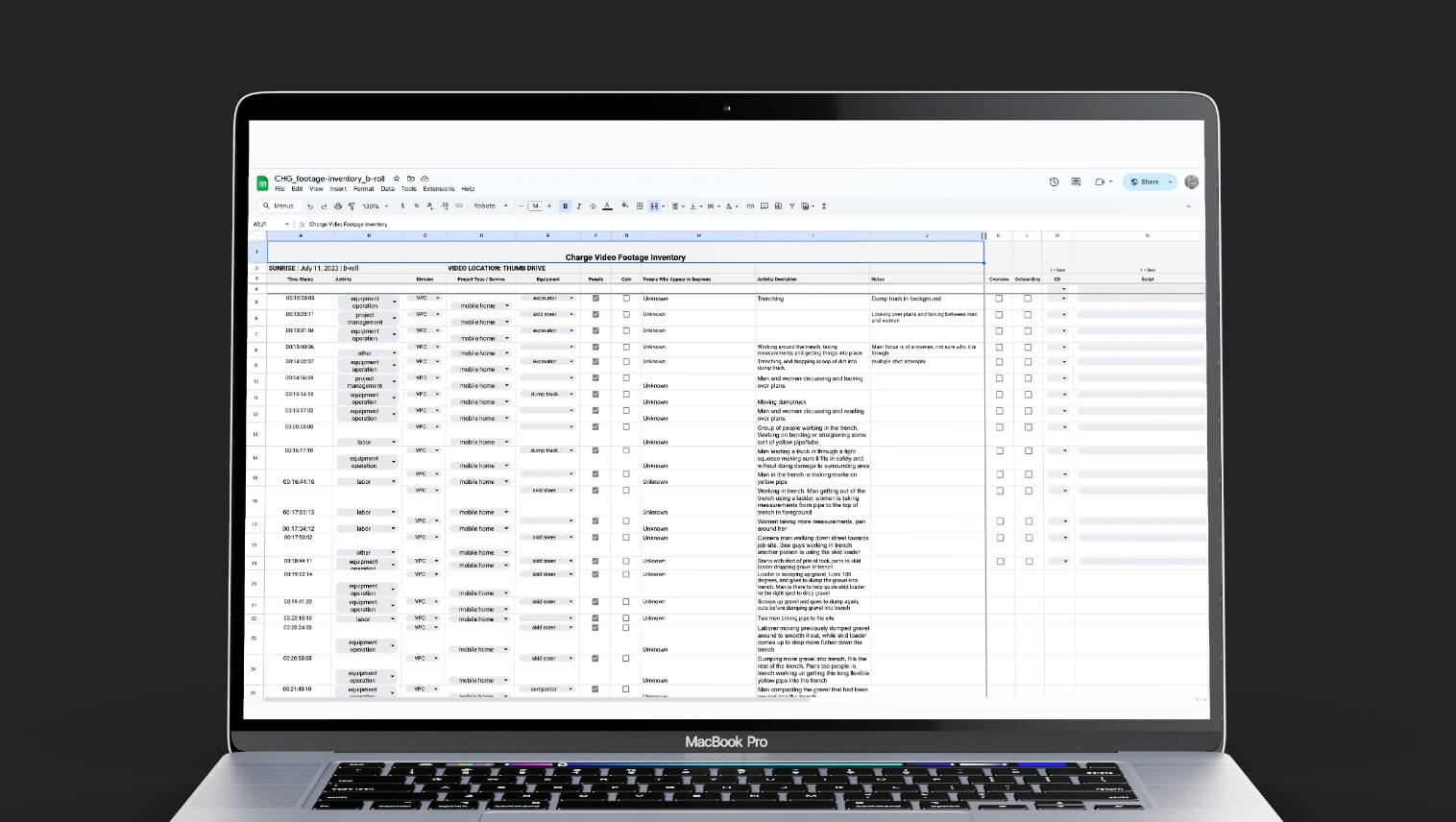
6. Get Wordy, Then Trim It Down
Before jumping into the video editing process, use the transcript segments from your catalog spreadsheet to start shaping your content flow. Moving written words around is much faster than editing video segments!
Open a new document and begin piecing together the written clips to build your narrative. Group content in themes, topics, or scenes framed by compelling introductory and closing content. Select clear statements such as, “There’s so much opportunity for growth here,” followed by supporting clips that demonstrate this claim. This will give you a solid structure and provide social validation for your video, ensuring your story is clear and compelling.
After your storyline falls into place, assess content for alignment with the objectives of your video. Assess for flow, repetition, and impact. You will likely have far more footage than you need, but it is tempting to want to keep clips, because there is something about them that you really like. Make trims and omissions assertively to get close to the time length that you originally planned for. Don’t worry — cutting-room-floor segments are often useful for another future video!
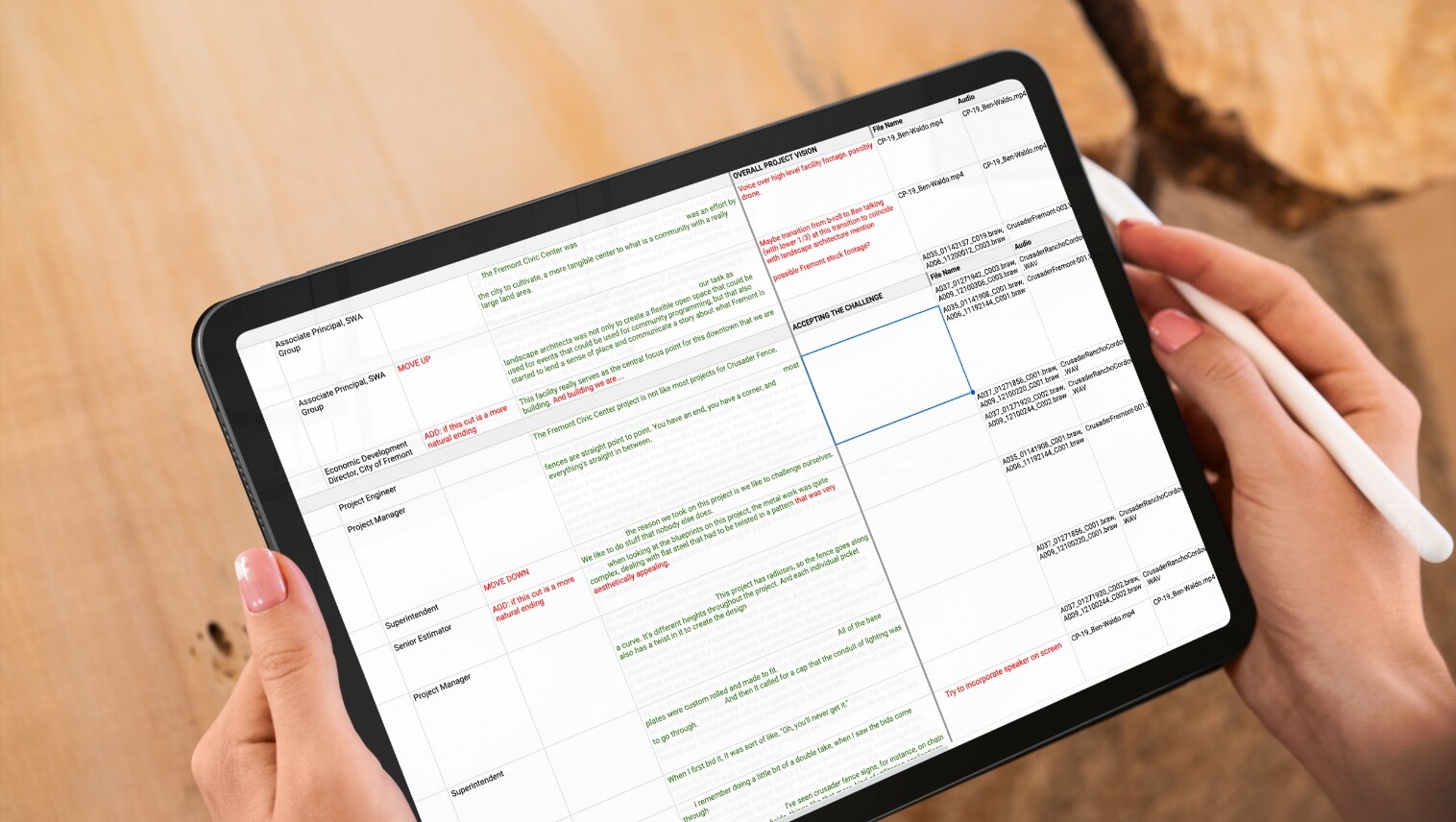
7. Bring in the Bling
Once you’ve identified the clips you’d like to use and the order in which you’d like to have them appear, it’s time to put the video footage together and add the fun stuff! Your prep work will pay off here with editing efficiencies and adherence to your content strategy. While the video editing process involves rounds of adjustments, this well-planned initial pass will give you a strong foundation to refine from.
As you finalize the video cuts of interview content, incorporate finishing elements like transitions, lower-third titles, b-roll footage, and a licensed music selection that ties everything together and supports your messaging. Consistency, precision, and alignment with your brand objectives are key for success. If you’re not familiar with video editing software, consider hiring your videographer to handle the technical side.
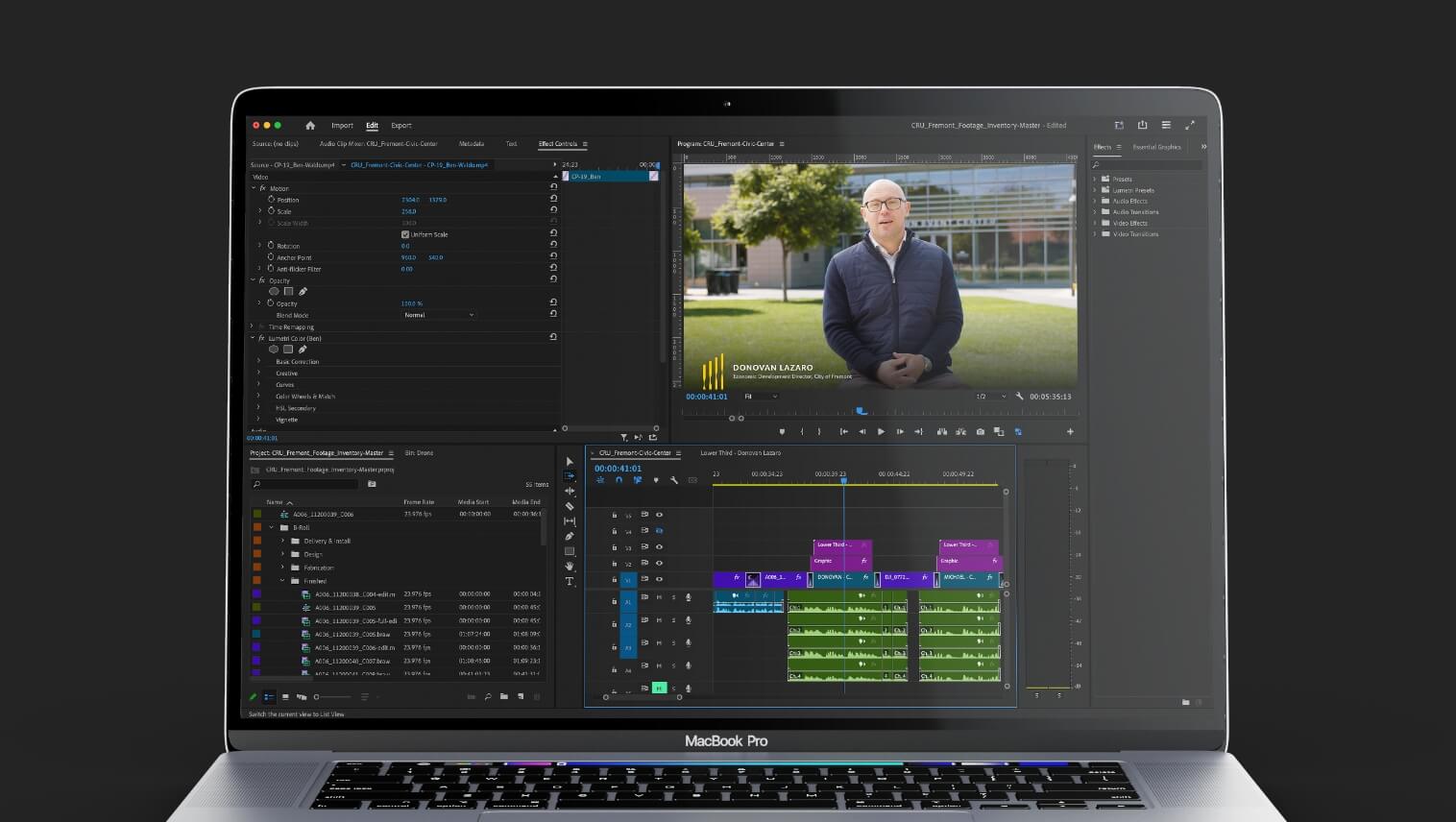
8. Place & Promote
Now that your video is polished and ready, it’s time to strategically place it where it will have the most impact as planned in Guideline 1. Start with your website, ensuring it’s featured prominently on relevant pages like the homepage, about us, or careers sections.
Consider creating shorter versions for social media and other applications — these bite-sized clips can act as teasers to drive traffic to your full-length video and engage your audience across multiple platforms. Sharing these teasers across your social media channels to reach your audience where they already engage, tailoring the message to fit each platform.
Don’t forget email campaigns—embed your video in newsletters or outreach to prospects. Promote your video through paid ads, if appropriate, to extend your reach. Remember, the more places you share your video, the more opportunities you have to connect with your audience and achieve your goals.
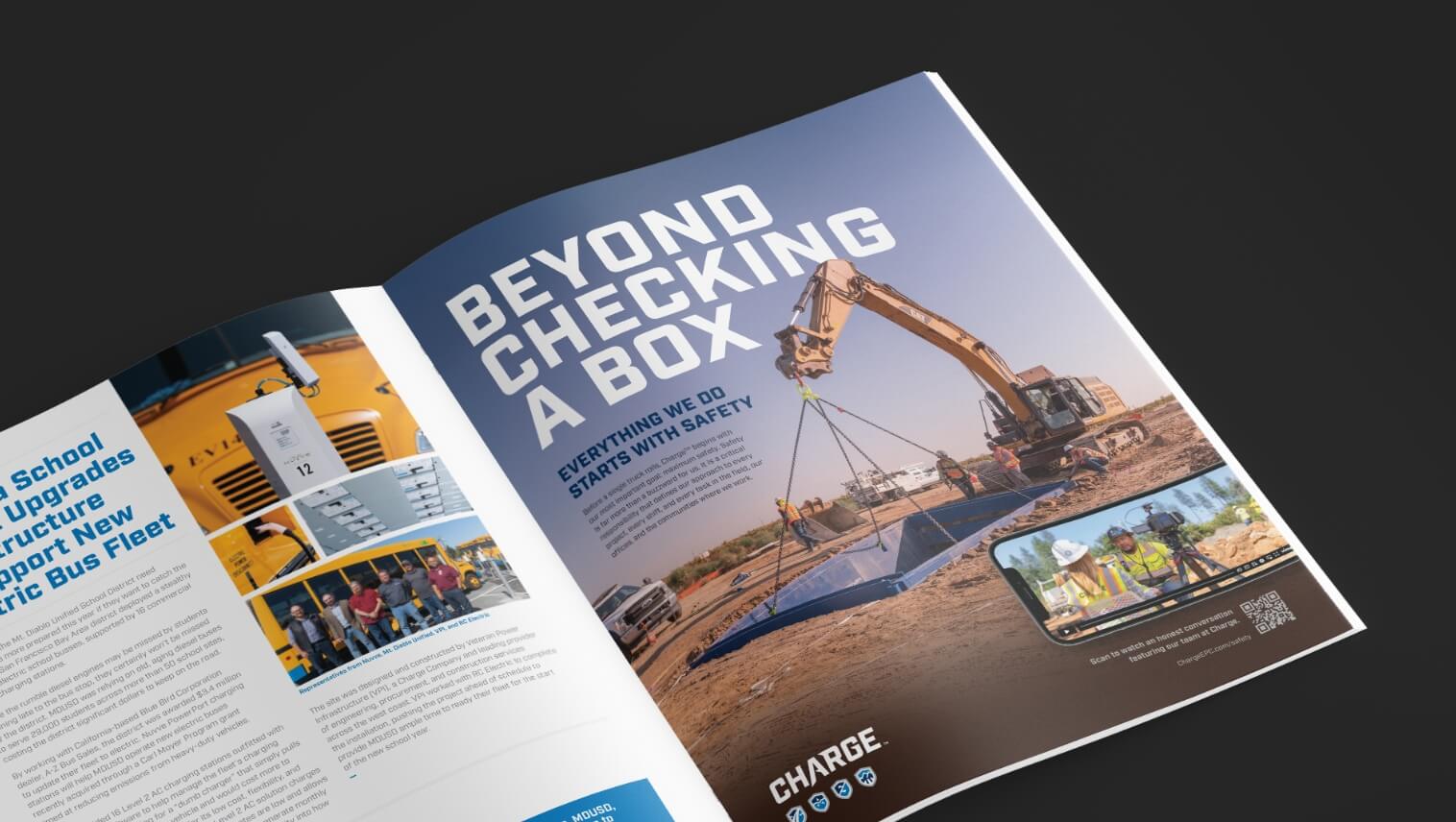
The recipe for success in a video project is one thing, but having the time and technical resources to bring it to life is another.
But, don’t worry. Your turnkey solution is a click away.
At Voice & Reason, we’ve mastered the art of company videos.
We understand that building a strong team can be one of the toughest challenges for growing service-based businesses like yours. That’s why we crafted our signature approach to efficiently produce quality, engaging, fully custom videos that do more than tell your story — they drive results.
We help you highlight what sets you apart from the competition and get that message in front of the right audience while keeping your goals and long-term value front and center. Whether you’re looking to boost recruitment, improve employee retention, or achieve any other outreach goal, our videos are designed to make a measurable impact.
Ready to get started? Let’s roll!

